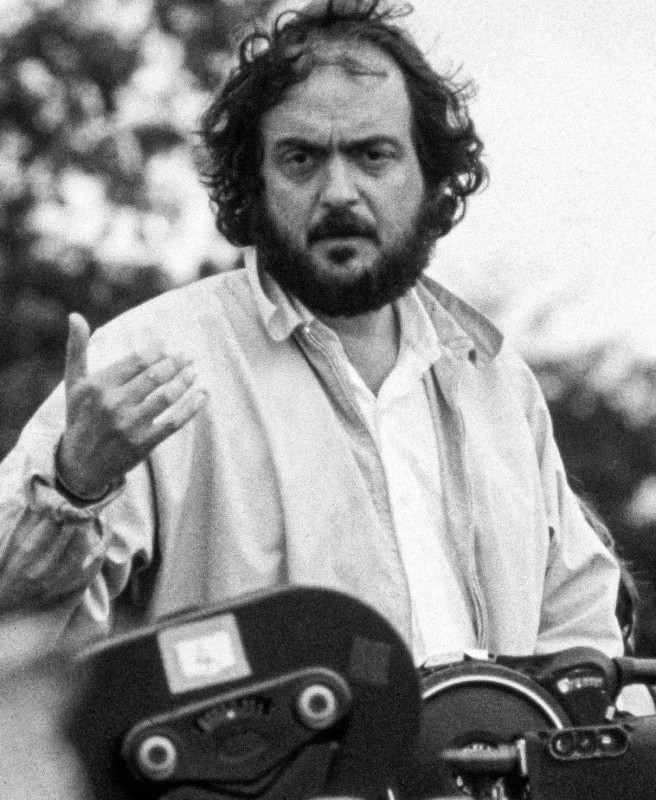Stanley Kubrick was a highly influential American filmmaker renowned for his meticulous approach to filmmaking. His projects, often adaptations of novels, were notable for their technical innovation, particularly in cinematography and set design, and his penchant for dark humor. Regarded as one of cinema's greatest artists, Kubrick's diverse filmography covers various genres, all distinguished by his unique visual style and thematic depth.
1902: Elias Kubrick Arrives in the US
In 1902, Stanley Kubrick's grandfather, Elias Kubrick, followed his father to the United States.
1925: Inspiration from 'Battleship Potemkin'
In 1925, Sergei Eisenstein's Battleship Potemkin inspired Kubrick's close-ups on the faces of people attending the funeral in the 1951 movie, Flying Padre.
1926: Publication of Traumnovelle
In 1926, Arthur Schnitzler's Freudian novella "Traumnovelle" (Dream Story) was published. Stanley Kubrick based his film "Eyes Wide Shut" on this novella.
1927: Kubrick Found Gance's Napoleon Film Terrible
Around 2001, Stanley Kubrick tried to see every film about Napoleon. Kubrick found Abel Gance's 1927 film, which is generally considered to be a masterpiece, a "really terrible" movie.
1927: Marriage of Kubrick's Parents
In 1927, Stanley Kubrick's parents, Jacob Leonard Kubrick and Sadie Gertrude Perveler, married in a Jewish ceremony.
July 26, 1928: Stanley Kubrick's Birth
On July 26, 1928, Stanley Kubrick was born in New York City. He later became a renowned filmmaker and photographer, known for his attention to detail and innovative cinematography.
1929: Influence of Blackmail on Killer's Kiss
In 1929, Alfred Hitchcock's film Blackmail was released. The film influenced Kubrick's Killer's Kiss (1955), specifically with the painting laughing at a character. Martin Scorsese in turn cited Kubrick's shooting angles and atmospheric shots in Killer's Kiss as an influence on Raging Bull (1980).
May 1934: Birth of Barbara Mary Kubrick
In May 1934, Stanley Kubrick's sister, Barbara Mary Kubrick, was born.
1935: Publication of Paths of Glory
In 1935, Humphrey Cobb's anti-war novel Paths of Glory was published. Paths of Glory (1957) is based on the novel of the same name.
June 1938: Kubrick Moves to Public School 90
In June 1938, Stanley Kubrick moved to Public School 90 in the Bronx.
1941: Kubrick Attends William Howard Taft High School
In 1941, Stanley Kubrick began attending William Howard Taft High School, where he joined the photography club.
1944: Inspiration from 'Ivan the Terrible'
In 1944 and 1958, Sergei Eisenstein's Ivan the Terrible films inspired Kubrick's close-ups on the faces of people attending the funeral in the 1951 movie, Flying Padre.
June 26, 1945: Kubrick's Photos Published in Look Magazine
On June 26, 1945, Look magazine published a photographic series by Stanley Kubrick. This marked an early achievement in his photography career.
1945: Kubrick Graduates High School
In 1945, Stanley Kubrick graduated from William Howard Taft High School with a poor grade average, limiting his options for higher education.
April 16, 1946: Publication of "A Short Story from a Movie Balcony"
On April 16, 1946, Look magazine published Stanley Kubrick's "A Short Story from a Movie Balcony," which staged a fight between a man and a woman.
August 1947: Kubrick Obtains Pilot's License
In August 1947, Stanley Kubrick obtained a pilot's license.
May 28, 1948: Kubrick Marries Toba Metz
On May 28, 1948, Stanley Kubrick married his high-school sweetheart, Toba Metz. They lived in a small apartment in New York City.
May 29, 1948: Kubrick marries Toba Metz.
On May 29, 1948, Stanley Kubrick married his high-school sweetheart Toba Metz, a caricaturist. He was 19 years old.
1948: Clarke's Short Story
In 1948, Arthur C. Clarke wrote the short story "The Sentinel", which would later form the basis for 2001: A Space Odyssey, a film he collaborated on with Stanley Kubrick.
1948: Assignments in Portugal and Florida
In 1948, Stanley Kubrick was sent to Portugal to document a travel piece and later covered the Ringling Bros. and Barnum & Bailey Circus in Sarasota, Florida for Look magazine.
January 18, 1949: Publication of 'Prizefighter'
On January 18, 1949, Look magazine published Stanley Kubrick's photo essay 'Prizefighter', which captured a boxing match featuring Walter Cartier.
April 2, 1949: Publication of 'Chicago-City of Extremes'
On April 2, 1949, Look magazine published Stanley Kubrick's photo essay 'Chicago-City of Extremes', showcasing his early talent for creating atmosphere with imagery.
July 1950: Publication of 'Working Debutante – Betsy von Furstenberg'
In July 1950, Look magazine published Stanley Kubrick's photo essay, 'Working Debutante – Betsy von Furstenberg', which included a Pablo Picasso portrait in the background.
1950: Sterling Hayden in The Asphalt Jungle
In 1950, Sterling Hayden's performance in The Asphalt Jungle impressed Kubrick, leading to Hayden being cast in Kubrick's film, The Killing (1956).
1951: Making of 'Flying Padre'
In 1951, Stanley Kubrick began making 'Flying Padre', a short film documenting Reverend Fred Stadtmueller's travels. The film was originally going to be called "Sky Pilot".
1951: Kubrick divorces Toba Metz.
In 1951, Stanley Kubrick divorced his first wife, Toba Metz, after three years of marriage.
1951: Release of The Red Badge of Courage
In 1951, the anti-war film The Red Badge of Courage was released. Schary stated that MGM would not finance another war picture, given their backing of The Red Badge of Courage.
1952: Kubrick meets Ruth Sobotka.
In 1952, Stanley Kubrick met his second wife, Ruth Sobotka, an Austrian-born dancer and theatrical designer.
1952: Ophüls' "Le Plaisir" named as favorite film.
In 1952, Stanley Kubrick named Max Ophüls' film "Le Plaisir" as his favorite film. Kubrick was influenced by Ophüls' tracking and fluid camera styles and used them in many of his films.
June 1953: Shooting of The Seafarers
In June 1953, Kubrick shot his first color film, The Seafarers, for the Seafarers International Union. The film focused on the logistics of the union and the amenities of seafaring, with Kubrick using a dolly shot in the cafeteria scene, which would later become his signature technique.
1953: Production of Fear and Desire
In 1953, Kubrick began making his first feature film, Fear and Desire, originally titled The Trap, after raising $1000 and receiving a $9000 investment from his uncle. The film, shot in the San Gabriel Mountains, is about soldiers behind enemy lines after a plane crash, with a scene noted for rapid close-ups.
January 1955: Kubrick marries Ruth Sobotka.
In January 1955, Stanley Kubrick married his second wife, Ruth Sobotka.
July 1955: Kubrick and Sobotka move to Hollywood.
In July 1955, Stanley Kubrick and his second wife, Ruth Sobotka, moved to Hollywood.
1955: Production of Killer's Kiss
In 1955, Kubrick began working on Killer's Kiss, originally titled Kiss Me, Kill Me. The film is a film noir about a young boxer and a woman abused by her boss. Kubrick explored unconventional angles and imagery during filming, drawing inspiration from Alfred Hitchcock's Blackmail (1929).
1955: Formation of Harris-Kubrick Pictures Corporation
In 1955, Kubrick met James B. Harris and they formed the Harris-Kubrick Pictures Corporation. Harris purchased the rights to Lionel White's novel Clean Break for $10,000. Jim Thompson was hired to write the dialog for the film, which became The Killing (1956).
1956: Ruth Sobotka is art director for "The Killing".
In 1956, Ruth Sobotka, Stanley Kubrick's wife at the time, was the art director for his film The Killing.
1956: Release of 'The Killing'
In 1956, Stanley Kubrick made his first major Hollywood film, 'The Killing', for United Artists. This marked a significant step in his career.
March 1957: Filming of Paths of Glory
In March 1957, filming for Paths of Glory began in Munich. Kubrick meticulously lined up cameras for the battle scene, capturing specific fields, and operated an Arriflex camera, zooming in on Kirk Douglas. The film became Kubrick's first significant commercial success.
October 1957: Optioning of I Stole $16,000,000
In October 1957, after Paths of Glory premiered, Bryna Productions optioned Herbert Emerson Wilsons's autobiography, I Stole $16,000,000, for Kubrick and Harris to produce as part of their co-production deal, where Kubrick was to write and direct and Harris to co-produce.
November 1957: Gavin Lambert signed as story editor
In November 1957, Gavin Lambert was signed as story editor for I Stole $16,000,000, and with Kubrick, finished a script titled God Fearing Man, but the picture was never filmed.
1957: Offer from Metro-Goldwyn-Mayer
In 1957, Dore Schary of Metro-Goldwyn-Mayer (MGM) was impressed with The Killing. Schary offered Kubrick and Harris $75,000 to write, direct, and produce a film, which ultimately became Paths of Glory.
1957: Kubrick meets Christiane Harlan.
In 1957, During the production of Paths of Glory in Munich, Kubrick met and romanced Christiane Harlan, who played a small role in the film.
1957: Release of 'Paths of Glory'
In 1957, Kubrick collaborated with Kirk Douglas on the anti-war film 'Paths of Glory'.
1957: Kubrick and Sobotka divorce.
In 1957, Stanley Kubrick and his second wife, Ruth Sobotka, divorced.
1958: Inspiration from 'Ivan the Terrible'
In 1958, Sergei Eisenstein's Ivan the Terrible films inspired Kubrick's close-ups on the faces of people attending the funeral in the 1951 movie, Flying Padre.
1958: Kubrick marries Christiane Harlan.
In 1958, Stanley Kubrick married Christiane Harlan, and the couple remained together for 40 years.
February 1959: Kubrick asked to direct Spartacus
In February 1959, Kirk Douglas asked Kubrick to direct Spartacus (1960). Kubrick was hired for $150,000 to replace director Anthony Mann. The film starred Douglas, who also produced it, and Laurence Olivier.
April 6, 1959: Birth of Anya Renata Kubrick.
On April 6, 1959, Stanley Kubrick's daughter Anya Renata was born.
August 5, 1960: Birth of Vivian Vanessa Kubrick.
On August 5, 1960, Stanley Kubrick's daughter Vivian Vanessa was born.
October 1960: Filming of Lolita begins
In October 1960, Kubrick began shooting Lolita at Elstree Studios. The filming went on for 88 days.
1960: Release of 'Spartacus'
In 1960, Kubrick collaborated with Kirk Douglas again on the historical epic film 'Spartacus'.
1960: Kubrick explains the meaning of his films.
In 1960, Kubrick explained in an interview with Robert Emmett Ginna that he was careful not to present his own views of the meaning of his films and to leave them open to interpretation.
March 1961: Filming of Lolita ends
In March 1961, Kubrick wrapped up the filming of Lolita at Elstree Studios. The filming went on for 88 days and Kubrick often clashed with Shelley Winters.
1961: Kubrick moves to the United Kingdom.
In 1961, Kubrick and his family moved to the United Kingdom to make the film Lolita. He shunned the Hollywood system and its publicity machine and he and Christiane had become alarmed with the increase in violence in New York City.
1961: Release of One-Eyed Jacks
In 1961, One-Eyed Jacks was released. Though Kubrick worked on a script with Marlon Brando for six months based on Charles Neider's The Authentic Death of Hendry Jones, he ultimately distanced himself from the project, which Brando directed.
1961: Kubrick Drafted Napoleon Screenplay
In 1961, Stanley Kubrick drafted a screenplay for a "grandiose" epic film about Napoleon, planning to use up to 40,000 infantry and 10,000 cavalry.
1961: Kubrick Moves to England
In 1961, Stanley Kubrick left the United States due to concerns about crime and creative differences with Hollywood studios, settling in England.
December 28, 1962: Terry Southern's Involvement Ends
On December 28, 1962, Terry Southern concluded his brief but impactful involvement in rewriting the script for Dr. Strangelove. This led to a dispute with Peter George, the novel's author, over credit for the film's writing.
1962: Release of Lolita
In 1962, Lolita, Kubrick's first attempt at black comedy and an adaptation of Vladimir Nabokov's novel, was released. Kubrick shot Lolita in England to take advantage of the Eady plan. Kubrick was impressed by the range of actor Peter Sellers and gave him one of his first opportunities to improvise wildly during shooting.
April 1963: Dr. Strangelove Filming Concludes
In April 1963, Stanley Kubrick completed filming Dr. Strangelove after a 15-week shoot. He then spent eight months editing the film. Peter Sellers played three roles in this film.
1963: Kubrick lists "I Vitelloni" as his favorite film.
In 1963, when asked by the magazine Cinema to name his favorite films, Kubrick listed Federico Fellini's "I Vitelloni" as number one in his Top 10 list.
April 1964: Kubrick Meets Arthur C. Clarke
In April 1964, Stanley Kubrick met with Arthur C. Clarke in New York City, leading to a collaboration on the screenplay for 2001: A Space Odyssey, based on Clarke's short story "The Sentinel".
1964: Release of Dr. Strangelove
In 1964, Dr. Strangelove or: How I Learned to Stop Worrying and Love the Bomb, another satirical black comedy, was released. Kubrick became preoccupied with the issue of nuclear war as the Cold War unfolded in the 1950s.
1964: Weegee as Special Stills Photographer
In 1964, Stanley Kubrick hired Weegee (Arthur Fellig) as the special stills photographer for 'Dr. Strangelove'.
December 29, 1965: Filming of Monolith Excavation Begins
On December 29, 1965, filming began for the excavation of the monolith on the moon for 2001: A Space Odyssey. This marked a key stage in the production of the film.
1965: Kubrick Buys Abbots Mead
In 1965, Stanley Kubrick bought Abbots Mead on Barnet Lane, located south-west of the Elstree/Borehamwood studio complex in England. He worked almost exclusively from this home for 14 years, managing all aspects of four of his films from this location.
1966: Kubrick uses video assist during filming.
In 1966, Kubrick was among the first directors to use video assist during filming, considered cutting-edge technology at the time, requiring him to build his own system.
1966: Kubrick Expresses Desire to Make a Horror Film
In 1966, Stanley Kubrick expressed his long-held desire to create the world's scariest movie, involving episodes that would play upon the audience's nightmare fears.
1968: Release of 2001: A Space Odyssey
In 1968, 2001: A Space Odyssey was released to mixed critical reception. Despite initial criticism, the film gradually gained popularity.
1968: Kubrick notices Wendy Carlos' album "Switched-On Bach".
In 1968, Kubrick noticed composer Wendy Carlos' album Switched-On Bach—which re-interpreted baroque music through the use of a Moog synthesizer.
1968: Similarities to 'Flying Padre' in '2001: A Space Odyssey'
In 1968, similarities were seen between several of the views from and of the plane in 'Flying Padre', filmed in 1951, and '2001: A Space Odyssey' with the footage of the spacecraft.
1968: Lindsay Anderson's if....
Malcolm McDowell's role in Lindsay Anderson's if.... (1968) was crucial to his casting as Alex in A Clockwork Orange, and Kubrick professed that he probably would not have made the film if McDowell had been unavailable.
1969: Kubrick Settles on A Clockwork Orange
At the end of 1969, Stanley Kubrick decided to film A Clockwork Orange (1971), exploring themes of violence and experimental rehabilitation. This decision reflected contemporary concerns about youth degeneration.
1969: Influence of "Funeral Parade of Roses" on "A Clockwork Orange".
In 1969, Kubrick viewed Matsumoto Toshio's landmark queer cinema film, "Funeral Parade of Roses", which is thought to have strongly influenced "A Clockwork Orange".
1969: MGM Cancels Kubrick's Napoleon Project
In 1969, well into preproduction, MGM canceled Stanley Kubrick's film about Napoleon. Jack Nicholson had been cast as Napoleon.
February 1970: Initial Criticism of Dr. Strangelove
In February 1970, Robert Brustein of Out of This World described Dr. Strangelove as a "juvenalian satire", highlighting the initial mixed reactions to the film.
1970: Censorship lifted by Swiss Army
In 1970, the Swiss Army lifted censorship of Paths of Glory, which had been in place since the film's release. The film was shot in 1957.
1970: Poor Reception of the Soviet Film Waterloo
In 1970, the poor reception of the Soviet film "Waterloo", a film about Napoleon, was one of the reasons cited for the abandonment of Stanley Kubrick's Napoleon project.
1970: Shooting of A Clockwork Orange
The film A Clockwork Orange was shot over 1970. A Clockwork Orange (1971) is an exploration of violence and experimental rehabilitation by law enforcement authorities, based around the character of Alex (portrayed by Malcolm McDowell).
1971: Release of A Clockwork Orange
A Clockwork Orange was released in 1971, an exploration of violence and experimental rehabilitation by law enforcement authorities, based around the character of Alex (portrayed by Malcolm McDowell).
1971: A Clockwork Orange Release and Controversy
In 1971, A Clockwork Orange was released just before Christmas and became highly controversial due to its depiction of teenage violence. It received an X rating in both the UK and US.
1971: Release and Controversy of 'A Clockwork Orange'
In 1971, Stanley Kubrick's film 'A Clockwork Orange' was released, generating controversy and mixed reviews. Kubrick later withdrew it from circulation in the UK.
1971: Carlos composes music for "A Clockwork Orange".
In 1971, Wendy Carlos composed and recorded music for the soundtrack of Kubrick's film A Clockwork Orange.
1972: 2001: A Space Odyssey Earns $31 Million
By the end of 1972, 2001: A Space Odyssey had earned $31 million worldwide, indicating its growing popularity despite initial mixed reviews.
1972: Release of "Wendy Carlos's Clockwork Orange".
In 1972, Additional music not used in the film A Clockwork Orange was released as Wendy Carlos's Clockwork Orange.
1972: Warner Bros. Investment in Barry Lyndon
In 1972, John Calley of Warner Bros. agreed to invest $2.5 million into Barry Lyndon, contingent on Kubrick casting major Hollywood stars.
1973: Kubrick Turns Down "The Exorcist"
In 1973, Stanley Kubrick turned down the opportunity to direct "The Exorcist". Despite his desire to create the world's scariest movie, he declined directing this horror film.
1973: Filming Begins for Barry Lyndon
In the autumn of 1973, filming began on location in Ireland for Barry Lyndon, with a large cast and crew. The decision to film in Ireland was due to the abundance of 18th-century buildings.
1974: Kubrick Flees Ireland Due to IRA Threats
In 1974, Stanley Kubrick fled Ireland with his family after receiving death threats from the IRA due to shooting scenes with English soldiers for Barry Lyndon.
1974: Ban lifted for Paths of Glory in France
In 1974, the ban on Paths of Glory was lifted in France, where it had been prohibited for its "unflattering" depiction of the French military. The film was shot in 1957.
1975: Release of Barry Lyndon
In 1975, Barry Lyndon, an adaptation of William Makepeace Thackeray's novel, was released, telling the story of an 18th-century Irish rogue and social climber.
1975: Kubrick on the essence of dramatic form.
In a 1975 Time magazine interview, Kubrick stated: "The essence of a dramatic form is to let an idea come over people without it being plainly stated. When you say something directly, it is simply not as potent as it is when you allow people to discover it for themselves."
1976: Kubrick uses Steadicam in "The Shining".
In 1976, Kubrick was among the first directors to use the Steadicam in "The Shining". Kubrick described Steadicam as being like a "magic carpet", allowing "fast, flowing, camera movements" in the maze in The Shining which otherwise would have been impossible.
1977: Kubrick Turns Down "Exorcist II: The Heretic"
In 1977, Stanley Kubrick declined directing "Exorcist II: The Heretic". This was despite once expressing interest in making the scariest movie.
1978: Home at Childwickbury Manor
In 1978, Stanley Kubrick made his home at Childwickbury Manor with his wife Christiane, which became his workplace for managing film productions.
1978: Kubrick Moves to Childwickbury Manor
In 1978, Stanley Kubrick moved into Childwickbury Manor in Hertfordshire, about 30 miles north of London. This 18th-century stately home became a workplace for him and his wife, with stables converted into production rooms.
1979: Herr writes narration for Apocalypse Now
In 1979, Michael Herr wrote Martin Sheen's narration for Apocalypse Now.
May 23, 1980: Kubrick Orders Scene Deletion from "The Shining"
On May 23, 1980, five days after its release, Stanley Kubrick ordered the deletion of a final scene from "The Shining", featuring the hotel manager Ullman visiting Wendy in the hospital, deeming it unnecessary due to the audience's excitement at the climax.
1980: "The Shining" Release
In 1980, "The Shining", directed by Stanley Kubrick and starring Jack Nicholson and Shelley Duvall, was released. The film is an adaptation of Stephen King's novel of the same name.
1980: Kubrick collaborates with Carlos on "The Shining".
In 1980, Kubrick collaborated with Wendy Carlos on The Shining. The opening of the film employs Carlos' rendering of "Dies Irae" (Day of Wrath) from Hector Berlioz's Symphonie Fantastique.
1980: Influence of Killer's Kiss on Raging Bull
In 1980, Martin Scorsese's Raging Bull was influenced by Kubrick's innovative shooting angles and atmospheric shots in Killer's Kiss (1955). Scorsese cited Killer's Kiss as an influence.
1980: Kubrick Meets Michael Herr
In 1980, Stanley Kubrick met author Michael Herr, through mutual friend David Cornwell, and became interested in Herr's book "Dispatches", about the Vietnam War. Herr had also written Martin Sheen's narration for Apocalypse Now.
1980: Release of 'The Shining'
In 1980, Stanley Kubrick released the horror film 'The Shining', becoming one of the first directors to use a Steadicam for stabilized tracking shots.
August 1985: Filming of Full Metal Jacket Begins
In August 1985, Stanley Kubrick started shooting "Full Metal Jacket". The film was shot within a 30-mile radius of his house.
September 1986: Filming of Full Metal Jacket Concludes
In September 1986, Stanley Kubrick concluded shooting "Full Metal Jacket". The film was shot within a 30-mile radius of his house.
June 1987: "Full Metal Jacket" Opens Strong
In June 1987, "Full Metal Jacket" opened strongly, taking over $30 million in the first 50 days. The film was overshadowed critically by Oliver Stone's "Platoon", which was released a year earlier.
1987: Full Metal Jacket Released
In 1987, "Full Metal Jacket", directed by Stanley Kubrick, was released. The film was based on Gustav Hasford's Vietnam War novel "The Short-Timers".
1987: Kubrick discusses his reputation for excessive takes.
In 1987, Kubrick addressed his reputation for excessive takes in an interview with Rolling Stone, stating it was exaggerated but often due to actors being unprepared with their dialogue.
1987: Release of 'Full Metal Jacket'
In 1987, Stanley Kubrick released 'Full Metal Jacket', a Vietnam War film that utilized Steadicam technology for fluid tracking shots.
1993: Release of Schindler's List
In 1993, Steven Spielberg's "Schindler's List" was released. Kubrick's unfinished Aryan Papers was a factor in the abandonment of his project about a Nazi officer who used the pen name "Dr. Jazz" to write reviews of German music scenes during the Nazi era, as Schindler's List covered much of the same material.
1995: Kubrick Approaches Spielberg with "A.I." Script
In 1995, Stanley Kubrick approached Steven Spielberg with the "A.I." script, suggesting that Spielberg direct it with Kubrick producing. They held long telephone discussions about the film.
March 7, 1999: Stanley Kubrick's Death
On March 7, 1999, Stanley Kubrick, the influential American filmmaker, passed away, leaving behind a legacy of groundbreaking films.
July 16, 1999: Planned Release Date for Eyes Wide Shut
July 16, 1999 was the planned release date for Stanley Kubrick's final film, "Eyes Wide Shut", starring Tom Cruise and Nicole Kidman.
1999: Kubrick's Death
Following Stanley Kubrick's death in 1999, Steven Spielberg took the drafts and notes left by Kubrick and his writers and composed a new screenplay for A.I. Artificial Intelligence.
1999: Death of Kubrick and Release of 'Eyes Wide Shut'
In 1999, Stanley Kubrick died at the age of 70, a few days after hosting a screening for his family and the stars of his final film, the erotic drama 'Eyes Wide Shut'.
1999: Death of Stanley Kubrick.
In 1999, Stanley Kubrick died. He and Christiane Harlan had been married for 40 years.
1999: Kubrick Wins Britannia Award
In 1999, Stanley Kubrick won the Britannia Award, which was later named after him in 2000.
1999: Barry Lyndon Rated as One of the Greatest Films
In 1999, The Village Voice rated Barry Lyndon as one of the greatest films ever made, highlighting its enduring reputation among critics and filmmakers.
2000: A Clockwork Orange Re-released in the UK
In 2000, A Clockwork Orange was re-released in the United Kingdom after being unavailable legally since its initial release in 1971, following Kubrick's death.
2000: BAFTA Renames Award to Stanley Kubrick Britannia Award
In 2000, BAFTA renamed their Britannia lifetime achievement award to the "Stanley Kubrick Britannia Award", joining other notable figures who have annual awards named after them.
June 2001: Release of "A.I. Artificial Intelligence"
In June 2001, "A.I. Artificial Intelligence" was released. The film, directed by Steven Spielberg, contained a posthumous production credit for Stanley Kubrick and a brief dedication "For Stanley Kubrick" at the end.
2001: 2001
2001 is the year of the title of Stanley Kubrick's movie 2001: A Space Odyssey. The movie explores themes of human evolution and the birthing of one intelligence by another.
2001: Kubrick After Completing 2001: A Space Odyssey
After completing 2001: A Space Odyssey, Kubrick searched for a project that he could film quickly on a more modest budget. He settled on A Clockwork Orange (1971) at the end of 1969, an exploration of violence and experimental rehabilitation by law enforcement authorities, based around the character of Alex (portrayed by Malcolm McDowell).
2001: Legacy of '2001: A Space Odyssey'
In 2001 and beyond, '2001: A Space Odyssey' continued to be regarded as one of the greatest films ever made, influencing generations of filmmakers.
2001: Release of "A.I. Artificial Intelligence"
In 2001, "A.I. Artificial Intelligence" was released. The film was directed by Steven Spielberg, produced by Kubrick's longtime producer Jan Harlan, and based on drafts and notes left by Stanley Kubrick.
2001: Video assist used during the filming of 2001.
In 2001, Kubrick had video assist in place during the filming of the movie, and was able to view a video of a take immediately after it was filmed.
2001: Ligeti's music in "2001".
In 2001, Kubrick included music by Hungarian composer György Ligeti in his film, introducing the composer to a broad Western audience. The music in 2001 was "at the forefront of Kubrick's mind" when he conceived the film.
2001: Kubrick and Spielberg Collaborate on A.I. Artificial Intelligence
In 2001, Stanley Kubrick and Steven Spielberg previously collaborated on "A.I. Artificial Intelligence" after Kubrick's death.
2001: PJ Harvey Praises 2001: A Space Odyssey
In 2001, Stanley Kubrick released the movie '2001: A Space Odyssey', praised by PJ Harvey.
2001: Kubrick wins Oscar for Special Effects in "2001".
In 2001, Stanley Kubrick used special effects, including slit-scan photography and front-screen projection, and won his only Oscar for special effects in the film.
2001: "The Shining" Ranked as a Top Thriller
In 2001, The American Film Institute ranked Stanley Kubrick's "The Shining" as the 29th greatest thriller film of all time.
2001: Kubrick influenced by Max Ophüls style.
In 2001, Walker noted that Kubrick was influenced by the tracking and fluid camera styles of director Max Ophüls, and used them in many of his films, including Paths of Glory and 2001: A Space Odyssey. Kubrick noted how in Ophüls' films "the camera went through every wall and every floor".
2001: Echoes of 'Flying Padre' in '2001: A Space Odyssey'
In 2001, similarities between 'Flying Padre', filmed in 1951, and '2001: A Space Odyssey', released in 1968, were noted, particularly in the aerial views and close-ups of faces.
2001: Stanley Kubrick: A Life in Pictures Documentary Released
In 2001, the documentary Stanley Kubrick: A Life in Pictures, produced and directed by Jan Harlan, was created by many people who worked with Kubrick on his films.
2002: Barry Lyndon Rated as One of the Greatest Films by Sight & Sound
In 2002, Sight & Sound rated Barry Lyndon as one of the greatest films ever made, highlighting its enduring reputation among critics and filmmakers.
2004: The Life and Death of Peter Sellers Film
In 2004, Stanley Tucci portrayed Stanley Kubrick in the film The Life and Death of Peter Sellers, which documents the filming of Dr. Strangelove.
2004: First Public Exhibition of Kubrick's Archives
In 2004, the first public exhibition of material from Stanley Kubrick's personal archives was presented in Frankfurt, Germany.
2005: Barry Lyndon Rated as One of the Greatest Films by Time
In 2005, Time rated Barry Lyndon as one of the greatest films ever made, highlighting its enduring reputation among critics and filmmakers.
2005: Colour Me Kubrick Film Release
In 2005, the film Colour Me Kubrick, authorized by Stanley Kubrick's family and starring John Malkovich as Alan Conway, a con artist who had assumed Kubrick's identity, was released.
July 7, 2009: Death of Anya Renata Kubrick.
On July 7, 2009, Stanley Kubrick's daughter, Anya Renata, passed away.
2009: "Stanley Kubrick: Taming Light" Exhibition in Dublin
In 2009, an exhibition of paintings and photos inspired by Stanley Kubrick's films, titled "Stanley Kubrick: Taming Light", was held in Dublin, Ireland.
2010: Dr. Strangelove Named Sixth-Best Comedy
In 2010, The Guardian named Dr. Strangelove the sixth-best comedy film of all time, cementing its legacy as a highly regarded comedic work.
2010: Kanye West's "Runaway" Inspired by Eyes Wide Shut
In 2010, the music video for Kanye West's song "Runaway" was inspired by Stanley Kubrick's film Eyes Wide Shut.
2011: Publication of "Stanley Kubrick's Napoleon: The Greatest Movie Never Made"
In 2011, Taschen published the book "Stanley Kubrick's Napoleon: The Greatest Movie Never Made", a compilation of literature and source documents from Stanley Kubrick about his Napoleon project.
October 30, 2012: Kubrick Exhibition Opens at LACMA
On October 30, 2012, an exhibition devoted to Stanley Kubrick opened at the Los Angeles County Museum of Art (LACMA), featuring a wide collection of documents, photographs, and on-set material.
March 2013: Spielberg Announces Napoleon TV Miniseries
In March 2013, Steven Spielberg announced that he would be developing Napoleon as a TV miniseries based on Stanley Kubrick's original screenplay.
June 2013: Kubrick Exhibition Concludes at LACMA
In June 2013, the Stanley Kubrick exhibition at the Los Angeles County Museum of Art (LACMA) concluded.
October 2013: Tribute to Kubrick at São Paulo International Film Festival
In October 2013, the Brazil São Paulo International Film Festival paid tribute to Stanley Kubrick, staging an exhibit of his work and a retrospective of his films.
2013: Frewin Reveals Kubrick's Interest in Nazis
In 2013, in an Atlantic article, Tony Frewin, an assistant who worked with Stanley Kubrick, revealed that Kubrick was limitlessly interested in anything to do with Nazis and desperately wanted to make a film on the subject.
2014: Kubrick exhibit opened at the Toronto International Film Festival (TIFF)
In late 2014, Stanley Kubrick exhibit opened at the Toronto International Film Festival (TIFF)
January 2015: Kubrick Exhibit Closes at TIFF
In January 2015, the Stanley Kubrick exhibit closed at the Toronto International Film Festival (TIFF).
April 2018: Mountain on Charon Named After Kubrick
In April 2018, which marked the 50th anniversary of 2001: A Space Odyssey, the International Astronomical Union named the largest mountain of Pluto's moon Charon after Stanley Kubrick.
October 2019: Skirball Cultural Center Hosts Kubrick Photography Exhibition
In October 2019, the Skirball Cultural Center hosted an exhibition called Through a Different Lens: Stanley Kubrick Photographs, focusing on Kubrick's early career.
2019: Barry Lyndon's Rotten Tomatoes Rating
As of March 2019, Barry Lyndon has a 94% rating on Rotten Tomatoes, based on 64 reviews, reflecting its critical acclaim.
March 2020: End of Kubrick Photography Exhibition at Skirball Cultural Center
In March 2020, the exhibition Through a Different Lens: Stanley Kubrick Photographs, which focused on Stanley Kubrick's early career, ended at the Skirball Cultural Center.
November 2020: Dr. Strangelove's High Rating on Rotten Tomatoes
As of November 2020, Dr. Strangelove holds a near-perfect 98% rating on Rotten Tomatoes, based on 91 reviews, indicating its enduring popularity and critical acclaim.
Mentioned in this timeline
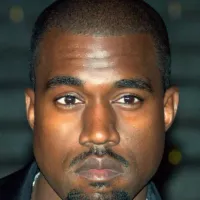
Kanye West professionally known as Ye is a highly influential...
The United States of America is a federal republic located...
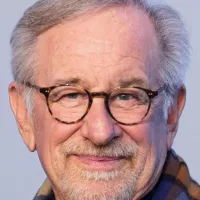
Steven Spielberg is a highly influential American filmmaker recognized as...
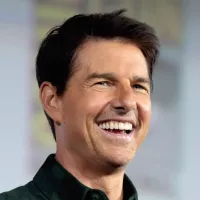
Tom Cruise a prominent American actor and producer stands as...

Christmas is an annual festival celebrated on December th commemorating...
The Cold War - was a geopolitical rivalry between the...
Trending
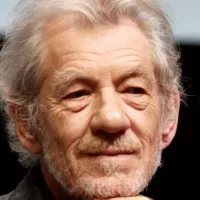
9 months ago Ian McKellen Returns to Marvel Universe in 'Avengers: Doomsday' as Magneto.

9 months ago Mike Bailey Responds To Ricochet Critics, Discusses Ring Gear and AEW Theme.
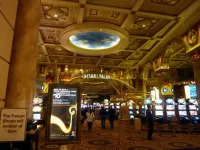
23 days ago Best Sweepstakes Casino Bonuses for Thanksgiving Weekend: Chumba and No Deposit Deals
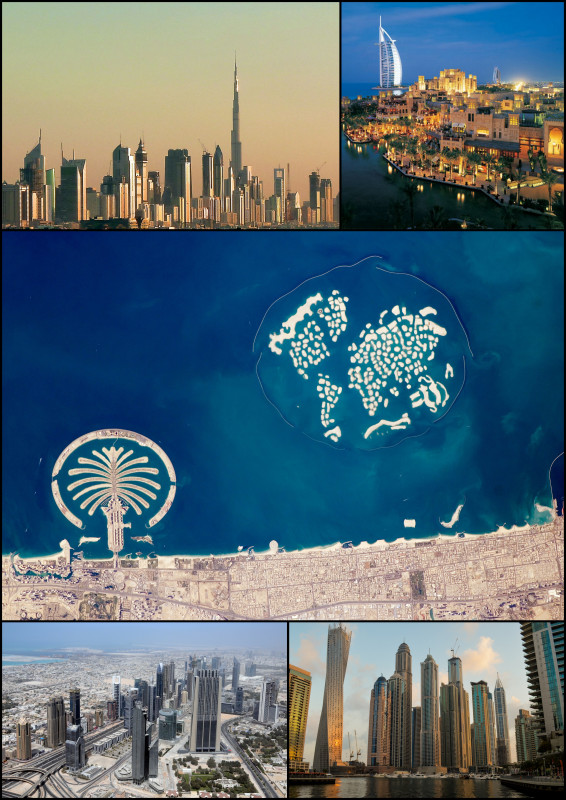
1 month ago Dubai Overtakes New York as Top Destination for the World's Wealthy Elite.
1 month ago Kim Woo-bin and Shin Min-ah announce marriage after 10 years of dating.
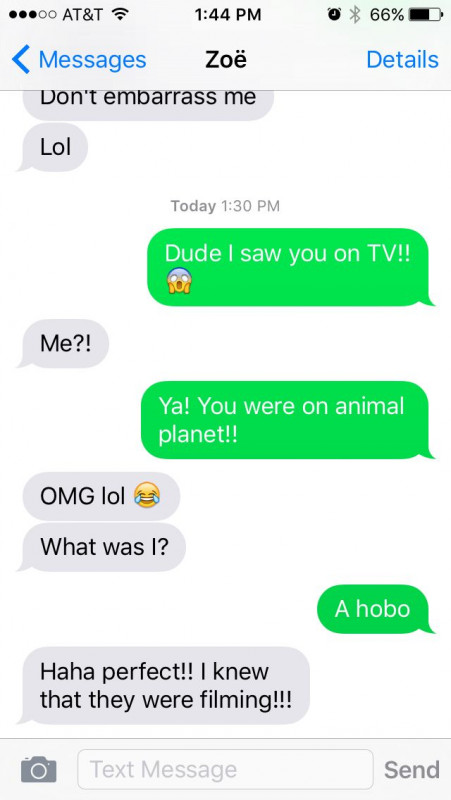
2 months ago LoL Worlds 2025: T1 vs Gen.G Final Forecasted to Break Viewership Records
Popular

Candace Owens is an American conservative political commentator and author...

Tucker Carlson is an American conservative political commentator known for...

XXXTentacion born Jahseh Dwayne Ricardo Onfroy was a controversial yet...

Kashyap Pramod Patel is an American lawyer who became the...

Ilhan Omar is an American politician currently serving as the...
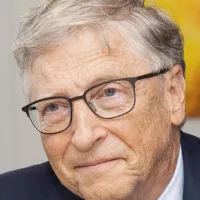
Bill Gates an American businessman and philanthropist revolutionized personal computing...
